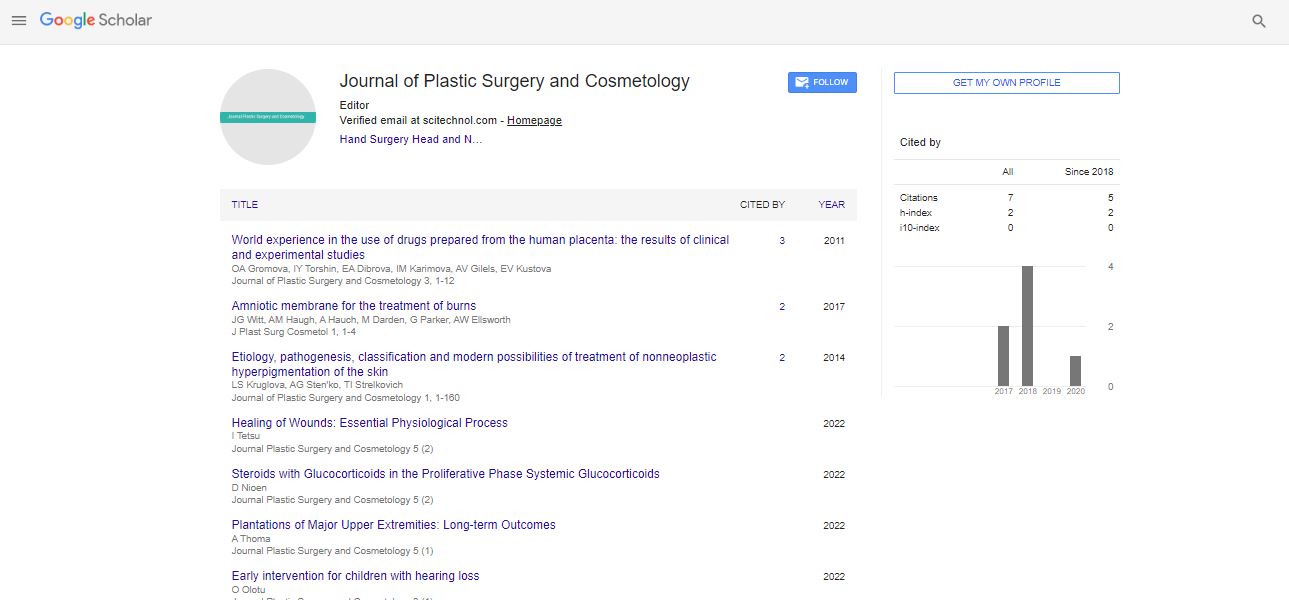Complex reshaping of the lower face with parallel implant placement
Kruglik
Member of the Society of Plastic Reconstructive and Aesthetic Surgeons of Russia, Russia
: J Plast Surg Cosmetol
Abstract
Statement of the Problem: There are numerous techniques to improve the patient’s appearance and reshape the chin contours. The analysis of cosmetic problems of patients from Eastern Europe showed that vertical microgenia has a special place among them. Horizontal microgenia may be of different origins. For instance, it may occur either if the mandible did not change its position in the temporomandibular joint (TMJ) in a timely manner or if there is a TMJ disorder, even though the mandible is of appropriate length. The attempts to correct the issue by referring to orthodontists and maxillofacial surgeons seem to improve the lower jawline but a durable effect is extremely hard to achieve. The USA and South Korea head the list of countries where injection treatments of the lower face are most popular: the proportion of procedures associated with filler treatment approaches 20% in these countries. In Russia, lower face procedures account for about 44%, which is in line with the current global trends for correcting volume loss and chin volume replenishing observed nowadays in plastic surgery and aesthetic medicine. Various filler products are mass-produced by numerous manufacturers; most implants comprise polyurethane foam. This material is well-established and allows producing comfortable twopiece implants; historic data on patients who had their implants placed 10 or more years ago are available. Individual products made of polyetheretherketone (PEEK) and ecoflone are commercially available, and they have been gaining momentum lately. Methodology & Theoretical Orientation: At the visit, we collect the patient’s complaints and measure the facial proportions, and it is essential to examine the dentofacial system. Also, anatomical features of the patient should be analyzed against available data from objective studies. The product (Bonabyte) is fitted using computed tomography, as it involves bone structure registration. We need to calculate accurately how much soft tissue space should be left above the implant, so the soft tissue component needs to be accounted for. As a result, a tailor-made PEEK product is obtained. Special software allows evaluating all the angles; the engineer designs a congruent implant. Findings: The cumulative score for batch-produced implants was 6.5, while a tailor-made implant scored 9. The implant is tailor- made and its posterior surface is congruent to the mandible contours, but it is not what makes it unique—it also has a proprietary lock. It is puzzle-like, which makes it possible to click the two pieces together and thus have them reliably fixed against each other. The proprietary lock prevents one piece from sinking relative to the other piece. Conclusion & Significance: Three tailor-made options of the implant for women and four for men have been designed and presented for batch production. The products are stable both in the horizontal plane, secured from moving, and in the vertical plane and are “step”-free. The time of surgery is reduced to 15–20 minutes. PEEK, of which the implant is made, is both strong and elastic. The physical properties of the material make it similar in texture to the periosteal structure. Light weight prevents gravity-induced changes. The novel product defines the chin contours and augments the patient’s appearance. Recent Publications: 1. Frodel JL. Facial Plast Surg Clin N Am 2005;13:73–84. 2. Zarins et al. Anatomy of facial expressions. 2017. 220p. 3. Heusèle C, et al. Chapter 24. Lips and Lipsticks. In: Draelos Z, ed. Cosmetic Dermatology: Products & Procedures. 1st ed. Wiley-Blackwell, 2010. p. 184–9. ISBN 978-1-4051-8635-3.
 Spanish
Spanish  Chinese
Chinese  Russian
Russian  German
German  French
French  Japanese
Japanese  Portuguese
Portuguese  Hindi
Hindi 